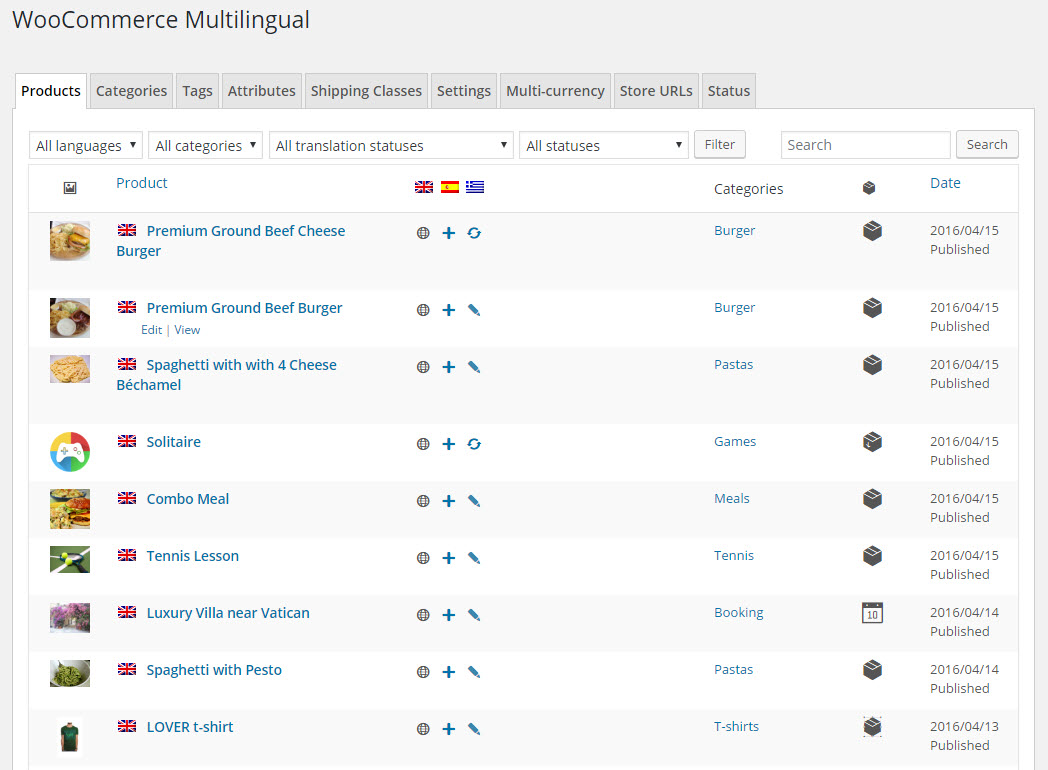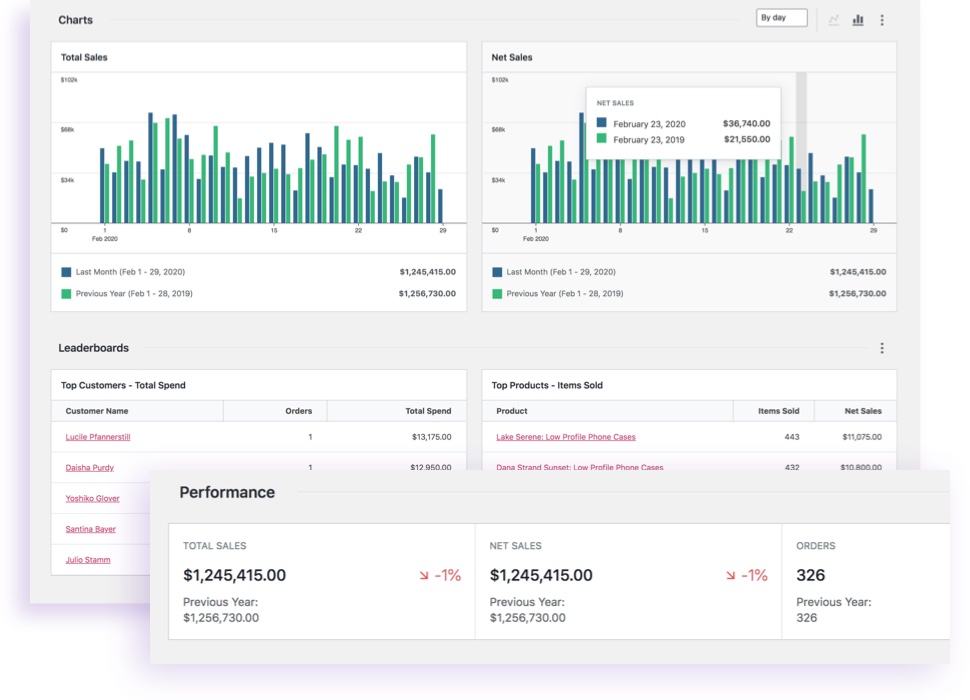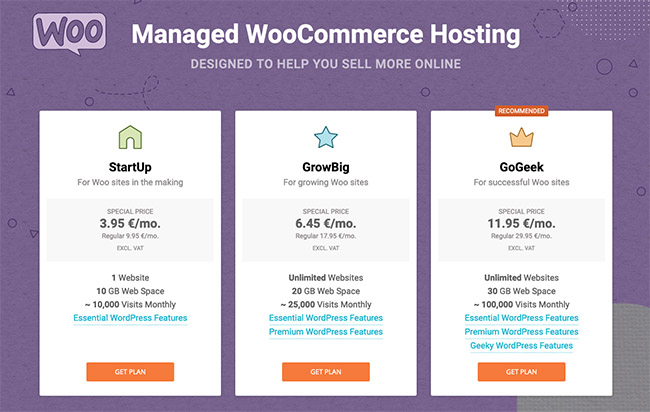WooCommerce is a free plugin that lets you transform your Wordpress blog into a completely customizable online store. The only requirement is that you have to host the website yourself, instead of having it hosted by Wordpress. With Elementor WooCommerce Builder, you can now design your single product and archive page templates visually and without coding skills. Webhooks were introduced in WooCommerce 2.2 and can trigger events each time you add, edit or delete orders, products, coupons or customers. It’s also possible to use webhooks with WooCommerce actions, e.g., Create a webhook to be used every time a product is added to the shopping cart, using the action woocommerceaddtocart.
What is WooCommerce? WooCommerce is a free WordPress plugin that adds e-commerce functionality to your WordPress website so you can have an online store. With just a few clicks, your WordPress website turns into a fully-functional e-commerce website.
If you’re asking “What is WooCommerce?”, chances are you already have a WordPress site, and you’re ready to begin selling, well, just about anything. In this post, we’ll cover what WooCommerce is, what it can do for you, and why you should use it.
What is WooCommerce? A Brief History
WooCommerce is a plugin that integrates easily with your existing WordPress site, turning your site into a fully functional WordPress e-commerce website with just a few clicks.
When the plugin was launched in 2011, it quickly became the primary solution for users looking to launch their own stores online.
Automattic (the owners of WordPress.com), acquired the plugin and its parent company in 2015 – it was their biggest acquisition to that date, and it has continued to experience explosive growth in the years since.
It currently powers over 99% of WordPress e-commerce websites in the US, Canada, and the UK (Source: BuiltWith.com.)
With over 27,000,000 downloads, and millions of active installations, it’s definitely the driving force behind numerous e-commerce sites (Source: WordPress.org.)
What Does WooCommerce Do?
WooCommerce provides basic store functionality right out of the box, with a free plugin available from the Plugin Repository, or right from your WordPress dashboard.
While it has hundreds of available extensions – more on that in a bit! – it offers some incredible functions right out of the box.
Easy Installation, Setup, and Integration

WooCommerce is designed to make getting started as easy as possible, with a simple installation and Setup Wizard to get your e-commerce store up and running with your WordPress theme.
- Installation – The WooCommerce plugin is installed just like any other plugin; search for it in the Plugins options in your WordPress dashboard, and install and activate it with a couple of clicks.
- Setup – When you install WooCommerce, the Setup Wizard will walk you through configuring basic steps to get your store up and running. Your e-commerce options are virtually endless, and the Setup Wizard cuts to the chase and highlights the most important options so you never miss a step.
- WordPress Theme Integration – Because WooCommerce is compatible with WordPress, it works well with most WordPress themes. You can select the Storefront theme if you’d like to use the official theme – and just like the plugin, it’s free of charge!
Data Control
Never worry about losing control of your data – WooCommerce puts you in the driver’s seat.
- Your Data, Always – When you use a third-party platform for e-commerce, if they close, your data is lost. With WooCommerce, you remain in charge of your data at all times. Data related to customer history and purchases, as well as store performance, is vital to running a successful e-commerce website.
Feature-packed Shopping Cart
Tailor your site visitor’s checkout process from start to finish, with processes that help you convert visitors into customers. From Payment Gateway to Checkout URLs, set up your site your way.
- Payment Gateways – With WooCommerce, you can accept checks, cash on delivery, bank transfer, or use PayPal to accept major credit cards and other PayPal payments. Prefer Stripe? You can configure Stripe as a payment gateway using the Setup Wizard.
- Geo-Location and Automatic Taxes – WooCommerce gives you the option to turn on geolocation and automatic taxes, so your shop will display the correct price including taxes to your customers, no matter where they are located.
- Customizable Checkout Process – Completely control the checkout process from start to finish. You can choose to sell to specific countries or worldwide, set your checkout flow URLs, enable/disable guest checkout, and force secure checkout.
- Default Currency – A wide variety of available currencies allows you to choose the currency you wish to use for your store.
- Redirect Cart – You can enable the option to redirect your customer to their cart once a product is added.
Complete Control of Products
Whether you’re selling one product, one product with many options, or dozens, hundreds, or more … WooCommerce gives you total control over each and every one.
- Unlimited Products – Start with your first product, and keep adding. WooCommerce gives you the option to add as many products as you’d like, only constrained by your hosting solution.
- Product Types – Do you sell ebooks? Affiliate products? Your own one-of-a-kind stock? No problem. You can set your product type to Simple Product, Grouped Product, External/Affiliate Product, Variable Product or Virtual/Downloadable Product.
- Product Variations – If your products are available with options, your customers can select those options when ordering, saving you both valuable time. Sizes, colors, prices, stock levels, images, and more can all be set for each available option.
- Inventory – Take control of your inventory management! Stock levels, backorders, hiding out of stock inventory, email notifications when an item’s stock level is low or sold out, and more, all help you streamline and simplify product management.

Easy Shipping
WooCommerce not only makes selling your product easy, it makes it just as easy to get it to your customer. A variety of shipping options help connect your products to your customers with minimal effort!

- Shipping Options – Make shipping less of a hassle with built-in options to offer Flat rate, International Shipping, Local delivery, or Local pickup. Set your rate to Automatic, and give your customer the lowest rate based on their address – or even offer Free shipping.
- Shipping Calculation, Display, and Destination – Hide the shipping rate until an address is entered, offer a Shipping Calculator in your shopping cart, and let your customer ship to their Billing Address only, or to a separate Shipping Address.
Easier Tax Management
Running a successful e-commerce store means dealing with taxes. WooCommerce simplifies that for you with a variety of options designed to make handling taxes much less stressful.
- Tax Management – Since WooCommerce is an online product built for selling products online, handling taxes on sales is built right into the plugin. Custom tax rates, major tax rate calculation, and geo-location tax rates are just some of the available options. You can also define tax rates, and control the tax rate assigned to your shipping costs.
A Leader in Marketing and Search Engine Optimization
Building a better mousetrap won’t bring anyone to your door if they don’t know you’ve built it! WooCommerce leverages the power of WordPress SEO to help get the word out, and let your potential customers know you’re there.
- WordPress SEO – Because WooCommerce runs on WordPress, your e-commerce store gets the benefit of the baked-in SEO options provided in WordPress. Because of that and the granular controls provided for key SEO options, WooCommerce storefronts get a significant SEO boosting.
- Coupons and Discounts – Easily enable discounts and coupon codes, without ever discounting tax.
- Reviews – Product reviews are essential to encourage online sales, and you can enable them right from your dashboard. Optionally, you can allow reviews from verified customers only, and display a label identifying the reviewers as verified.
Keeping You Informed

Selling products is a great start, and with WooCommerce reports, you can track what you’re selling, spot trends, and analyze your data to plan future growth.
- Store Dashboard – Quickly view your traffic, orders, and status summary from the built-in dashboard.
- Reports – With WooCommerce reports, you can view your gross and net sales, and print reports.
- Analyzing – Track your growth trends and sales to help plan the store growth.
Customer Management
From visitor to customer, from customer to repeat client – the Customer Management tools in WooCommerce make it easy for your site visitors to take the next step.
- Accounts and Passwords – Encouraging your customers to create accounts, and making it easy for them to do so, will help you retain your customers. You can set up your WooCommerce installation to optionally autogenerate passwords, and generate the customer account username from the customer’s email address, making the account creation process flow more smoothly.
- iOS App – Because your store should go with you! Easily check your product catalog, product details, orders, and more, right from your iOS device.
Easy Mobile E-Commerce
Customers on phones, phablets, and tablets are a growing demographic, and WooCommerce makes sure your customers have a great experience no matter which device they are shopping from.
- Mobile Friendly – “mCommerce,” or Mobile e-commerce, commands a large portion of online sales, with projected growth increasing astronomically. WooCommerce is mobile-friendly, so that you never miss out on a sale due to your customer’s device.
All of this, and so much more, is bundled right into the core plugin – enough to set up your own e-commerce store right out of the box.
Just in case, though, there are WooCommerce extensions.
Fully Extendable
With WooCommerce extensions, the sky truly is the limit. Over 450 extensions and counting mean that you can configure your shop in virtually limitless ways.
Instead of adding to the core plugin, extensions are add-ons that work only if WooCommerce is installed first, and they add additional functionality to your e-commerce website.

You can grab free and premium extensions from within the WooCommerce shop, and there are many additional plugins that are designed for or compatible with WooCommerce in the WordPress plugin directory.
Why Should I Use WooCommerce?
Now that we’ve answered “What is WooCommerce?” and “What can WooCommerce do?”, the answer to “Why should I use WooCommerce?” is readily apparent. From ease of use to SEO, control over inventory to mobile readiness, WooCommerce is the clear choice for your WordPress e-commerce site!
Get WooCommerce Tips
+ 5 Easy Ways to Make Your WooCommerce Store Successful
Just getting started with WooCommerce? In this ebook, we cover 5 ways to make more money with WooCommerce.
Download the Free Ebook
| Original author(s) | Mike Jolley, James Koster |
|---|---|
| Developer(s) | Automattic |
| Initial release | 2011[1] |
| Stable release | 5.1.0 (March 9, 2021; 45 days ago[2]) [±] |
| Repository | |
| Written in | PHP |
| Operating system | Unix-like, Windows |
| Type | e-commerce |
| License | GPL |
| Website | woocommerce.com |
WooCommerce is an open-sourcee-commerceplugin for WordPress. It is designed for small to large-sized online merchants using WordPress. Launched on September 27, 2011,[3] the plugin quickly became popular for its simplicity to install and customize and free base product.
History[edit]
WooCommerce was first developed by WordPress theme developer WooThemes,[4] who hired Mike Jolley and James Koster, developers at Jigowatt, to work on a fork of Jigoshop[5][6] that became WooCommerce.[7] In January 2020, it was estimated that WooCommerce is used by around 3.9 million websites.[8]
In November 2014, the first WooConf, a conference focusing on eCommerce using WooCommerce was held in San Francisco, California. It attracted 300 attendees.[9]
In May 2015, WooThemes and WooCommerce were acquired by Automattic, operator of WordPress.com and core contributor to the WordPress software.[10]
In December 2020, WooCommerce acquired MailPoet, a popular WordPress newsletter management plugin.[11]
Usage[edit]
WooCommerce is used by a number of high-traffic websites such as Small Press Expo.[12]For the 3rd week of September 2015, Trends indicated that WooCommerce ran on 30%[13] of e-commerce sites and millions of active installs.[14] Ecommerce is rapidly growing worldwide and WooCommerce has over 39 million downloads as a plugin and is currently active on more than three million websites and is the most popular eCommerce platform in 2018.[15] WooCommerce serves approximately 4% of the top million HTML pages.[16] In 2015, statistics show that the percentage of online stores that utilize WooCommerce through Wordpress.org's plugin is more than 30% of all stores.[17] The current 2019 market share for WooCommerce is 22% of the top 1 million sites using eCommerce technologies.[18]
Since Automattic's acquisition WooCommerce has kept gaining market share to become one of the leading E-commerce platforms on the Internet.[19]
Themes[edit]
With many WooCommerce-ready themes sold on third party websites it makes it difficult to exactly estimate how many themes can be associated with this WordPress plugin, but here are some WooCommerce stats for the bigger theme providers.[20]
- There are 1,135 WooCommerce themes on ThemeForest.[21]
- The WordPress.org theme directory has 548 WooCommerce themes.
Extensions[edit]
WooCommerce has attracted significant popularity because the base product, in addition to many extensions and plugins, is free and open-source. WooCommerce has hundreds of extensions and over 1,000 plugins.[22] In addition, there are thousands of paid add-ons for fixed prices. Many Premium Themes now offer capability with WooCommerce as well as plugins that make a theme framework compatible.[23]
Notable WooCommerce extensions include:
- WooCommerce Bookings: Which allows users to sell blocks of time as appointments.[24]
- WooCommerce Memberships: which allows the user to restrict access to certain parts of their WordPress website, and sell access to these parts of the website.[25]
WooExpert Partner program[edit]
Instead of a certification program WooCommerce uses an official partnership program. WooCommerce recommends users to use these WooExperts for their WooCommerce projects.[26] Suppliers can apply to become a partner and by doing so will undergo a multi-stage application process that includes skill evaluation and an interview. Throughout the process WooCommerce aim to assess familiarity with WooCommerce core and extensions. The partnership program had either a Gold, Silver or Bronze level[27] until late 2017, when it moved to a flat 'verified WooExpert' system.[28]
Revenues[edit]
A study conducted in 2017 by Todd Wilkins, Head of WooCommerce, suggests that WooCommerce stores would collectively account for nearly $10 billion in sales.[29]
See also[edit]
Woocommerce For Services
References[edit]
- ^'WooCommerce Has Arrived'. WooCommerce. 27 September 2011. Retrieved 17 January 2015.
- ^'WooCommerce - excelling eCommerce'. WordPress. Retrieved November 27, 2019.
- ^Perez, Sarah (27 September 2011). 'WooThemes Launches WooCommerce To Turn WordPress Sites Into Online Shops'. TechCrunch. Retrieved 17 January 2015.
- ^'WordPress Themes, Plugins & eCommerce'. WooThemes.
- ^Imel, Ryan (28 August 2011). 'Jigoshop team and WordPress community members share thoughts on forking'. WPCandy. Retrieved 17 January 2015.
- ^'Our forking views'. Jigoshop. 26 August 2011. Retrieved 17 January 2015.
- ^Imel, Ryan (25 August 2011). 'WooThemes forks Jigoshop into WooCommerce, launches WooLabs'. WPCandy. Retrieved 17 January 2015.
- ^Hyde, Ethan. 'WooCommerce Vs Shopify'. More Leads More Revenue.
- ^'Dedicated to store owners & WordPress developers wanting to learn the art of eCommerce using WooCommerce'. Wooconf. November 2014. Retrieved 5 October 2017.[non-primary source needed]
- ^'WordPress Parent Automattic Buys WooCommerce, a Shopping Tool for Web Publishers'. Re/code. 2015-05-19. Retrieved 19 May 2015.
- ^'MailPoet Joins WooCommerce'. MailPoet Blog. 2020-12-07. Retrieved 7 December 2020.
- ^'WooCommerce E-Commerce Usage'. WebTechster. Retrieved 2014-05-13.
- ^'Statistics for websites using Ecommerce technologies (The Entire Internet Tab)'. builtwith.com. Retrieved 21 September 2015.
- ^Warnimont, Joe (14 February 2018). 'WooCommerce Review: The King of Ecommerce Plugins on WordPress'. Ecommerce Platforms. Retrieved 30 April 2018.
- ^'How Many Websites Use WooCommerce? Usage Stats 2019'. Barn2 Media. 2019-02-11. Retrieved 2019-06-13.
- ^'How Many Websites Use WooCommerce? Usage Stats 2019'. Barn2 Media. 2019-02-14. Retrieved 2019-06-13.
- ^'How Many Websites Use WooCommerce? Usage Stats 2019'. Barn2 Media. 2019-02-14. Retrieved 2019-06-13.
- ^'How Many Websites Use WooCommerce? Usage Stats 2019'. Barn2 Media. 2019-02-14. Retrieved 2019-06-13.
- ^'WooCommerce keeps gaining Market Share'. ProWoos. Retrieved 16 August 2018.
- ^'WooCommerce Stats 2018: How Many Websites Use WooCommerce?'. Barn2 Media. 2018-02-13. Retrieved 2018-09-15.
- ^'WooCommerce Stats 2018: How Many Websites Use WooCommerce?'. Barn2 Media. 2018-02-13. Retrieved 2018-09-15.
- ^'[Infographic] 2017 WooCommerce Statistics'. Holler Box. 2017-08-01. Retrieved 2018-09-15.
- ^'WooCommerce Genesis Framework for WooCommerce'.
- ^'WordPress Parent Automattic Buys WooCommerce, a Shopping Tool for Web Publishers'. Recode. Retrieved 30 April 2018.
- ^'Easy Membership Sites With WooCommerce Memberships - Patrick's Programming Blog'. Patrick's Programming Blog. 1 November 2016. Retrieved 30 April 2018.
- ^'WooExperts - WooCommerce'. WooCommerce. Retrieved 2017-09-03.
- ^'Becoming a WooExpert - WooCommerce'. WooCommerce. Retrieved 2017-09-03.
- ^Scott, Robin (2017-12-02). 'WooCommerce Ends Gold Silver, Bronze – Just WooExperts'. Silicon Dales. Silicon Dales Ltd. Retrieved 6 February 2018.
- ^'WooCommerce Stores on Track to Surpass $10B in Sales This Year'. WordPress Tavern. 2017-10-19. Retrieved 2018-09-15.
Woocommerce Themes
External links[edit]
Woocommerce Square Sandbox

Comments are closed.